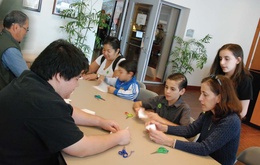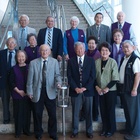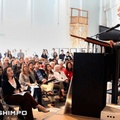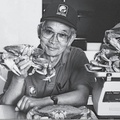Kyle Honma is a volunteer of the Hirasaki National Resource Center at the Japanese American National Museum. He started volunteering at the museum because of the influence of his paternal grandparents Hideo and June. They had volunteered for 16 years since the commencement of the Museum.
Kyle is a Japanese American Yonsei and a fourth generation Mexican American. It was 1997 when he first visited the Japanese American National Museum with his grandparents. He was in the first grade at that time. “I didn’t even know Little Tokyo existed,” he recalls. He didn’t realize then that he was destined to become an integral part of the Museum.
Today, the 25-year-old student is one of the Museum’s most energetic volunteers, dividing his time between school, a part-time job, and volunteering. “I really have to organize my time during the week,” Kyle says, adding that the inspiration for his commitment comes from his grandparents, who were among the Museum’s early volunteers in the 1990s.
“My grandparents kind of dragged me in here,” he says with a smile. “They brought me into a whole different light when it comes to being Japanese American. I learned a lot about my culture and identity. And once I started getting more involved, [I discovered] more about the Japanese American experience. I want to learn more about my heritage.”
Kyle’s journey of learning continued when he was trained by veteran volunteer Roy Sakamoto, who had been incarcerated at Tule Lake, the camp used to isolate those who were considered to be pro-Japan. “People don’t know a lot about Tule Lake. Roy researches a lot on his own time and is really dedicated to the Museum,” he points out.
Being of Japanese and Mexican American descent, Kyle brings a unique perspective. As a Hapa, he tends to identify more with his Japanese side. He attributes this to his grandparents, who lived close by as he was growing up.
Although he notes that it is rare when his family eats Japanese food, they do celebrate Japanese traditions such as Oshogatsu and Obon and have rice with nearly every meal. Most of the time, however, Kyle is more likely to eat Japanese food while out with his friends than at home.
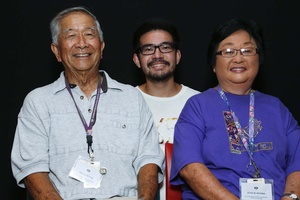
Kyle feels fortunate that his grandparents were willing to share their stories. “My grandmother, June, especially would tell me all about her camp experiences and [what happened] after camp,” he says.
June was born and raised in Hawaii, but at the outbreak of WWII, her father was picked up by the FBI because he was a judo instructor. He was among 1,500, mainly Issei, who were arrested. June was 6 or 7 years old at the time. Her family was sent to Jerome, Arkansas.
His grandfather, Hideo, stayed in Hawaii during the war but remembers being picked on because he “looked like the enemy.” Hideo was drafted into the U.S. Army just as the Korean War was ending.
Kyle’s grandparents have told him, “You know you’re going to carry on for us.” He’s ready for the challenge and says he sees it as “a bridge between the volunteers and my grandparents.”
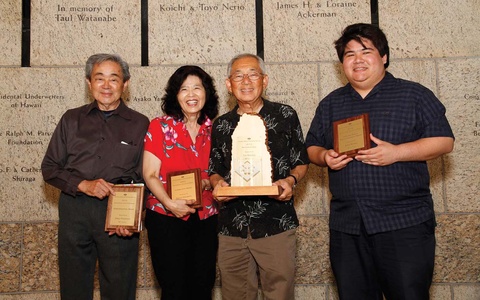
“I’d like visitors to go through the Common Ground exhibition,” says Kyle. “I want them to learn that there are stories in American history that no one knows about, and this is one of them.”
* Mr. Honma was interviewed by Tomomi Kanemaru and the article was written by Ellen Endo for Voices of the Volunteers: Building Blocks of the Japanese American National Museum, a book presented by Nitto Tire and published by The Rafu Shimpo. This story has been modified slightly from the original.

Presented by
© 2015 The Rafu Shimpo



